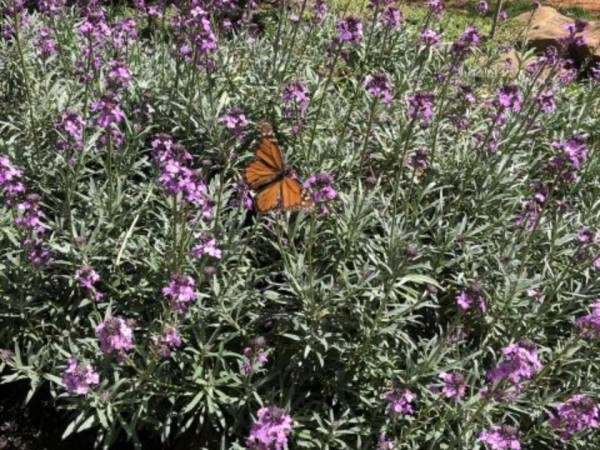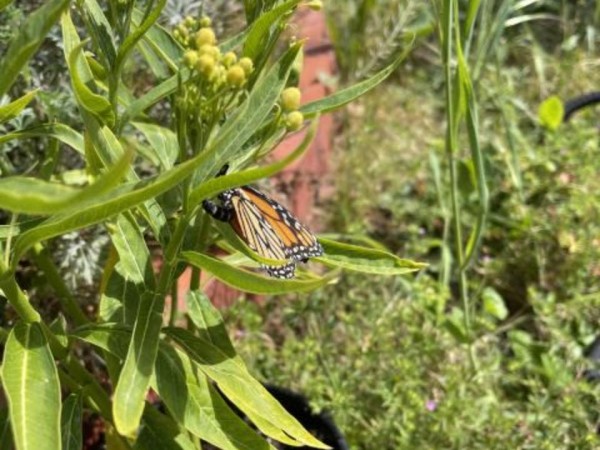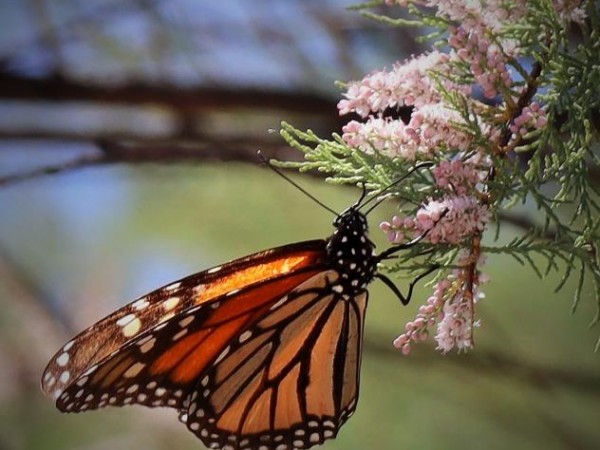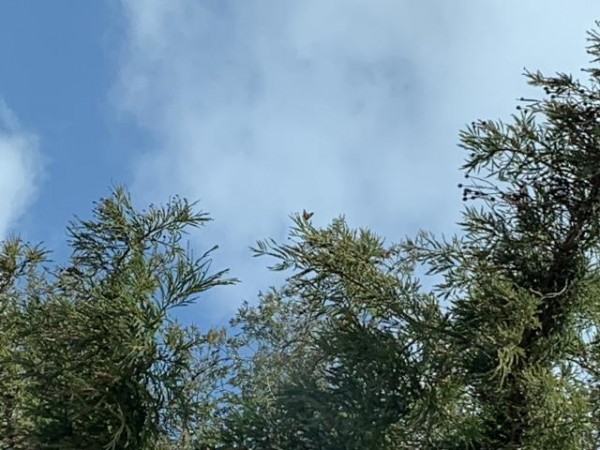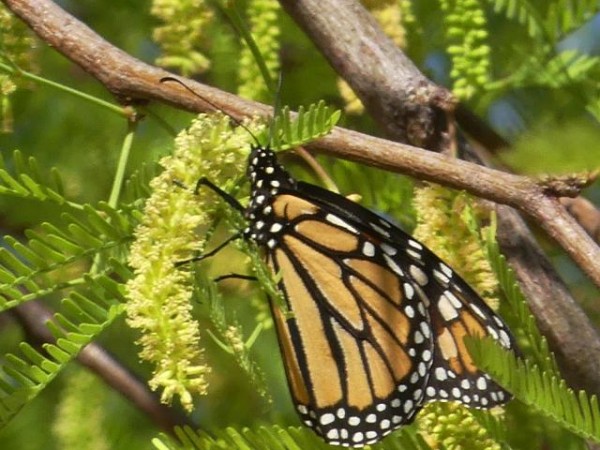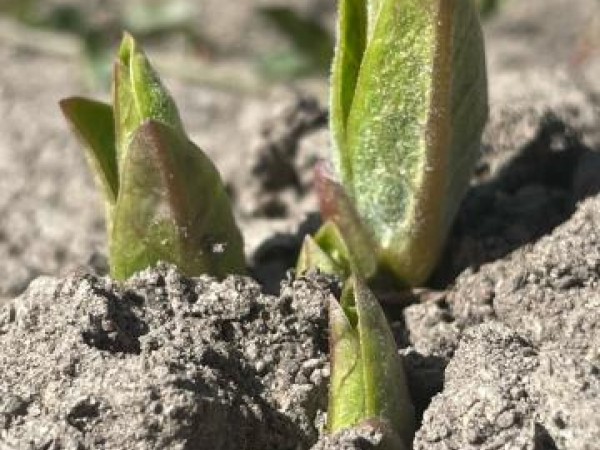Letter from Gail Morris: Western Monarch Spring 2022 Report #4
Published: 04/20/2022
Dear Western Monarch Friends,
April’s sightings are now tracking monarch movement both east and north, as their range expands through both California and Arizona. With sightings now on the western side of the Sierra Nevada mountain range, how soon will they appear in Nevada?
Western Monarch Sightings
Community scientists sent photos and reported sightings as monarchs continue their spring migration. Here is a sample of their reports:
Just east of Sacramento, John in Gold River, California, saw his first monarch of the season on April 1. “Nectaring. Was unable to get photo but was undoubtedly a monarch. Was able to come within 8 feet of butterfly. Later seen nearby flying through open area. Occasionally chased by pipevine swallowtails.”
Lynn watched a monarch visiting her milkweed for the first time in Sun City, Arizona, on April 8. “Lynn in Sun City spotted this bright female monarch on her Desert (Rush) Milkweed, A. subulata. She nectared from the flowers but never oviposited. The female stayed a while in her yard flying to nearby shrubs.”
On April 10, Eileen in Nevada City, California, found a monarch. “Pale, worn looking male feeding on flowers for 20+ minutes.” On the same day, Deanna in Oakland, California also spotted a monarch. “Female spotted, ovipositing and nectaring.”
Julie in Tucson, Arizona, reported her first monarch of the season on April 11. “Hovering around lime tree.”
James in Mesilla, New Mexico, spotted his first monarch of the season on April 15. “Individual monarch observed at 1:40pm (MDT) nectaring from tamarisk flowers from a pair of small trees growing on the Rio Grande bank, W of Mesilla, NM. The afternoon was warm, sunny, and with gusting winds; the monarch fed on the lee side of these trees as the branches bounced all directions due to wind gusts.”
Joyce is keeping us updated on the monarch population at a local Google building in Mountain View, California, on April 16. “Saw 11 Monarchs at Google today. Weather was in the low 60’s and partly sunny. Saw most of the monarchs flying and one female was busy laying eggs when the sun broke out. This one flew up to rest in a Redwood Tree (far left side of tree in photo).”
Barry also spotted a monarch on April 16 in Palm Springs, California, feeding on the flowers of a Mesquite Tree. Barry reported, “female.” But if you look at the photo you can see a small bulge on the third vein from the abdomen of the discal cell indicating this is likely a male. What do you think? Sometimes it’s difficult to sex a monarch when their wings are closed
Milkweed Up and Ready!
Bradford in Salt Lake City found his first milkweed breaking ground. “4/8/2022 at 16:16. Species: Asclepias speciosa, Plant age: 1+ year (maybe well over 2 years), Location description: urban median between roadways 300 S blueberry nearby in flower. Temperature: 72°F Insects seen nearby: honey bee, bumble bee, white butterfly, mosquito. Sky: clear."
Where are they coming from?
Monarchs are moving into new areas and questions often arise as to their origin. Is Barry’s observation in Palm Springs, California, part of the small number of monarchs that overwinter in the desert region or a remigrant from the southern coast of California or even Baja California? Lynn also had several questions about the monarch in her yard in Sun City, Arizona.
Lynn spotted the fresh and new female monarch flying around her A. subulata milkweed in her yard recently and asked a good question: Why is she here now and where is she from? The bright, new color indicates a recently eclosed monarch but the "where" is a harder question to answer. Did she eclose in southern Arizona, northern Mexico or eastern California? Unknown. What we do know is that Lynn watched her closely and noticed she never laid eggs, just visited the flowers to nectar. So, the question arose if maybe she hadn't mated yet or since the sighting was in the afternoon was this female simply out of eggs for the day. So many questions! But by submitting reports we can all learn from patterns that can be revealed over time.
Thanks to the many people who sent reports and also photos when possible to document monarch movement this time of year as well as emerging milkweed as monarchs draw near. Be sure to keep your camera handy and send in your reports this exciting time of year.
Celebrate Earth Day and Monarchs
We celebrate Earth Day this week with many activities scheduled across the region. This is the perfect time to remain vigilant as monarchs quietly sail into your region. Enjoy making our world a better place. Add native trees, shrubs and flowers including native milkweed and other host and pollinator plants to benefit all creatures. No effort is too small as we repair our fractured habitats.
If you are lucky enough to see monarchs, be sure to report them to Journey North—whether they are adults or eggs or larvae. Provide as much information as you can such as weather conditions (it’s okay to estimate). Your detailed description of what you see can include, but is not limited to, the monarch’s gender and activity and, if known, the type of flowers if they are nectaring. If you can, observe the condition of the wings—fresh and new or worn and tattered or something in between. This helps us learn more about monarch age and survival. We realize it isn’t always possible, but please take a photo if you can. Thanks so much for your help.
Gail Morris is the Coordinator of the Southwest Monarch Study (www.swmonarchs.org), a Monarch Watch Conservation Specialist, and the Vice President of the Monarch Butterfly Fund, the Central Arizona Butterfly Association and the Western Monarch Advocates. The Western Monarch Population News is based on comments provided to Gail Morris. We hope to increase the number of sightings and therefore photos and comments entered into Journey North. We rely on the volunteers who communicate regularly with Gail and who agree to participate in our effort to increase awareness of the population of western Monarchs. You can reach her at gail@swmonarchs.org


